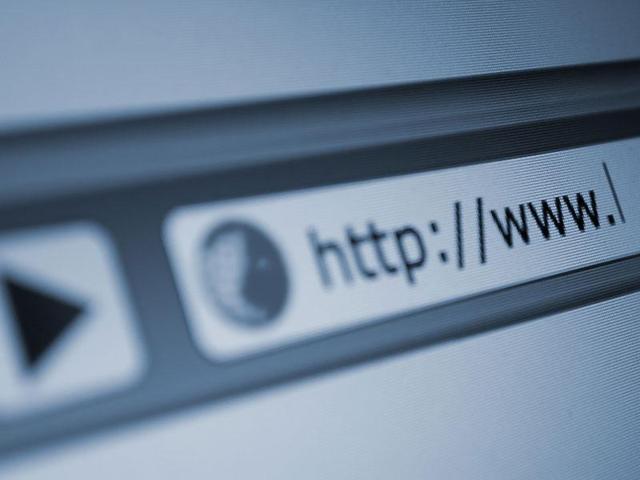The federal government reports that over 90 percent of American homes in rural communities are connected to the internet, but only 49 to 65 percent have access to broadband, according to an analysis of broadband usage data from the Pew Research Center.
One demographic that is considered to be the least connected and “most underserved” is Native American people living on Tribal lands, a 2018 study from the Government Accountability Office (GAO) found.
The GAO report explained that a lack of broadband coverage negatively impacts Tribal lands’ chances for economic development, public safety, healthcare and educational opportunities and advancements.
Broadband is a high-speed form of internet service that is now ubiquitous throughout much of the industrialized world. It is generally about 100 times faster than “dial-up” service.
The lack of broadband service also affects people’s ability to participate in the political discussion, explained Zach Cikanek, the national spokesperson for ConnectAmericansNow, an organization that advocates for broadband deployment in rural areas in the U.S.
“Today, most constituents communicate with their representatives through the internet,” he explained. “Whether it’s through emails, their websites or social media, [broadband] is necessary in the 21st century to engage in the political conversation,” he explained.
The report further explains that low levels of population density have played a major role in the lack of coverage in rural areas, including Native American Tribal lands, as internet service providers have little profit incentive to expand coverage there.
Inaccurate Data
In 2018, the Federal Communications Commission released a report that indicated that 35 percent of Native American people that live on Tribal lands lack access to broadband – a staggering statistic compared to eight percent of Americans overall that lack reliable access to broadband.
However, experts warn that the problem is even worse and that the FCC’s data is often misleading or inaccurate.
Cikanek broke down the problems with how the FCC gathers data to measure the percentage of people with broadband coverage in the U.S.
“As it turns out the FCC, in order to map coverage in the United States is still relying on a form called 477 that internet service providers fill out,” Cikanek explained. “And it says, ‘Could you promote internet service in this census block area without an extraordinary commitment of resources?’”
Accurate @FCC data is critical to closing the digital divide. Learn more: pic.twitter.com/yeyTdLnXyH
— Connect Americans Now (@connectamnow) May 28, 2019
He continued, “There are two problems with that question. One is that it says ‘Could you provide internet?’ and not ‘Do you provide internet?’ And the second [problem] is if you’re only looking at a space the size of a census block, you’re not going to get a very representative answer in rural [and Native American] communities because census blocks are much bigger there.”
This is confirmed by another GAO report released in 2018 that specifically examined the FCC’s methods for gathering data on broadband deployment and coverage.
“The manner in which deployment is measured is not based on actual deployment, but on potential deployment, which is meaningless if it cannot be achieved,” said Geoffrey Blackwell, a former FCC representative that testified before Congress in October 2018.
Additionally, a report from Arizona State University’s American Indian Policy Institute also explained how the FCC’s method in gathering data through the 477 Form was flawed.
“In reporting Form 477 data, a carrier reporting coverage in a Census block may indicate that only a single household is receiving such service,” the report stated.
Other companies and broadband advocates have been coming together, according to Citanek, to provide more accurate data on the subject of broadband deployment in rural and Native American communities.
Microsoft, for example, has been working with advocacy groups to study and provide broadband coverage to under-served communities across the U.S.
The United States Broadband Availability and Usage Analysis compared the FCC’s data based on the 477 Forms to Microsoft’s data, which calculated broadband usage per county in the U.S.
In that analysis, a map of the U.S. based on the FCC data and Microsoft data is shown side by side to account for the data discrepancy.
The county with the largest gap is Ferry County, Washington. According to the FCC’s data, the county has 100 percent broadband availability, while Microsoft’s data shows broadband usage in Ferry County is only 2.2 percent.
Broken Promises
On June 5, a panel convened on Capitol Hill hosted by Washington Representative Derek Kilmer, where other representatives, as well as members of the U.S. Commission on Civil Rights (USCCR) and tribal leaders, discussed a 2018 report conducted by the USCCR, entitled “Broken Promises.”
The panelists from the USCCR gave recommendations for Congress to pass a budget to assist in the unmet and essential needs of the Native American people.
Chair of the USCCR Catherine Lhamon said that the commission is urging Congress to pass a spending package to aimed at remedying Tribal infrastructure issues, such as roads, education facilities, and telecommunications, which includes the issue of lack of broadband.
Karen Narasaki, one of the Commissioners of the USCCR and a long-time advocate for the Native American people, said having access to broadband coverage is “absolutely necessary,” for anyone living in the 21st century.
“The majority of commissioners believe that access to broadband is a necessity at this point,” she explained. “It’s like access or water or electricity.”
The Problem with Funding
The GAO report also outlined methods for eligible telecommunications carriers (ETCs) to obtain funding to provide coverage for Native Americans on Tribal lands through grants developed by the FCC and the Universal Service Fund (USF).
The problem here, according to Kirk Francis, a panelist from the Broken Promises discussion and the Penobscot Nation Chief in Maine, is that grant-based solutions don’t take into account that need “varies from Native American community to community.”
Additionally, in the GAO’s report, four programs were reviewed – three programs within the FCC and one grant program in the Rural Utilities Service (RUS). It found that “in total, less than 1 percent [of funds] has gone directly to tribes or Tribal-owned broadband providers to expand broadband service.”
The same found that “14 tribal entities received federal funding from the FCC and RUS to increase broadband deployment” between 2010-2017 as well. According to the National Conference of State Legislatures, there are 573 federally recognized Native American tribes in the U.S.
The data used by the FCC has also played a role in limited funding opportunities for Native Americans trying to obtain broadband deployment on Tribal lands.
The report from the American Indian Policy Institute explained that “these misrepresentations of service availability could lead to Census blocks on Tribal lands being ineligible to apply for federal broadband infrastructure funds.”
Members of the panel also suggested that establishing “opportunity zones” on Tribal lands could potentially assist in economic development. This could also help expedite the process of more federal funding for necessities, like broadband.
Opportunity zones are sections of lower-income areas that are established to create opportunities for investment from bigger businesses.
The creation of opportunity zones could potentially increase partnerships between Tribal lands and bigger businesses as well, which the GAO explained was possible but currently very rare, as a method to obtain reliable broadband coverage.
The FCC did not respond to a request for comment.

















